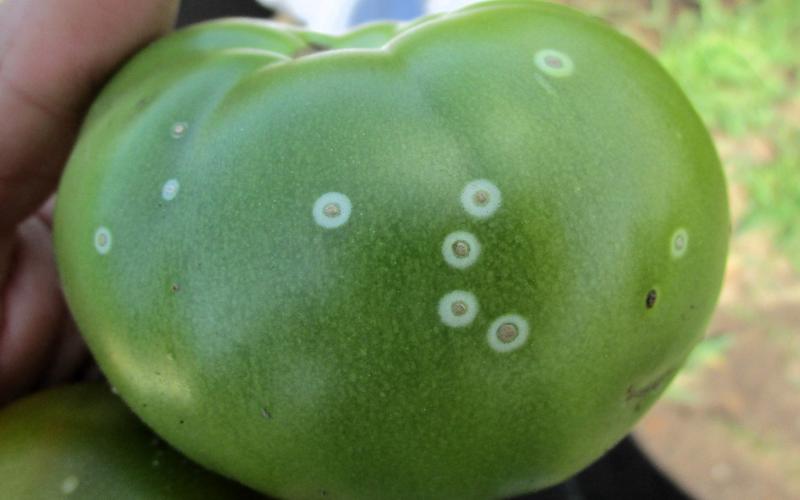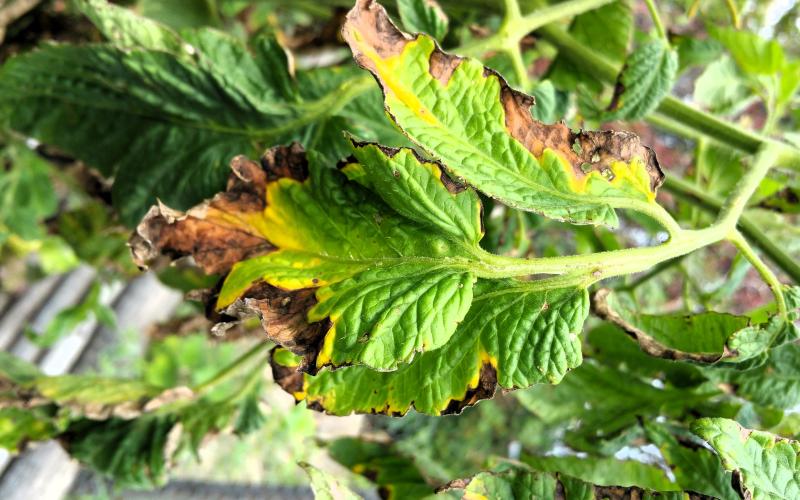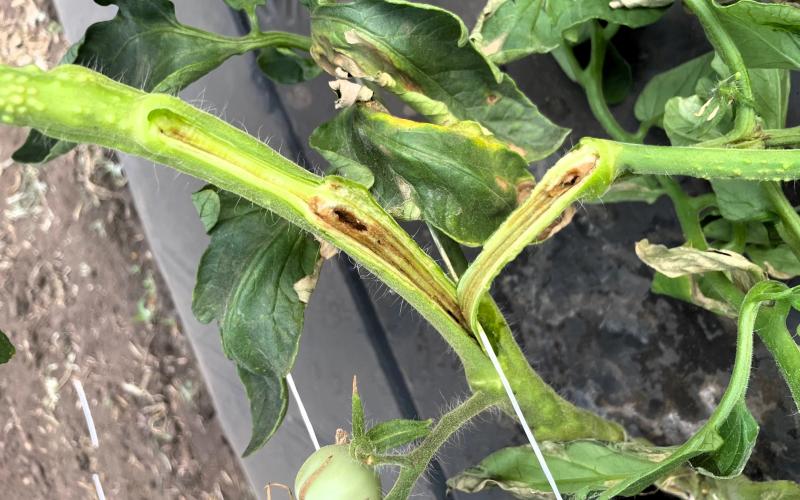Scientific name: Clavibacter michiganensis subsp. michiganensis (Cmm)
Native range: first described in Michigan in 1909 and now present in most state in the Continental U.S.
At Risk
Bacterial canker, caused by Cmm, affects tomatoes and peppers. The disease is most severe in tomato plants. Solanaceous weeds, such as nightshade, are also potential hosts and may act as a reservoir for the bacteria.
Once introduced, Cmm can be a significant problem in greenhouses and high tunnel tomato production. In gardens and field-grown tomatoes, bacterial canker can occur but is only severe when weather conditions favor disease development.
Distribution
This pathogen occurs in tomato production areas worldwide but has only occasionally caused significant production issues. Before 2015, the occurrence and distribution of bacterial canker of tomato in Minnesota were unknown. Since then, the Minnesota Department of Agriculture (MDA) surveys have identified Cmm in 19 counties in Minnesota.
Biology
Bacterial canker of tomato is caused by Clavibacter michiganensis subsp. michiganensis (Cmm). This plant pathogenic bacteria can be introduced to a new area in infected seeds or transplants, which often appear healthy at the time of planting. The bacteria reproduce and move within the plants vascular system resulting in wilt and discoloration of leaves.
Bacteria are sticky and can easily move from one plant to another on the hands and tools of workers and can also spread through splashing rain or irrigation. Once the season is over, Cmm bacteria can survive in infected plant debris, contaminated wooden stakes, and infected weed hosts for up to 3 years. Seeds from infected plants can carry the bacteria and result in disease the following season.
Identification
Symptoms of bacterial canker in greenhouse or high tunnel tomatoes are different than symptoms seen and field or garden grown tomatoes. A laboratory test is required to confirm the presence of Cmm. Testing is available through the University of Minnesota Plant Disease Clinic.
Field or garden grown tomatoes:
- Leaf edges are brown with a yellow border between green and brown tissue.
- Smal white spots with a corky tan center form on green fruit.
Greenhouse or high tunnel tomatoes:
- Leaves in the lower canopy first wilt, then yellow and brown.
- Wilt and leaf death progresses up the plant. Eventually the entire plant may die.
- Tan to brown streaks or ovals form on infected stems.
- When split open infected stems have brown streaks and discoloration inside.
Look-Alikes
Many other tomato diseases occur in Minnesota and can resemble bacterial canker. For help with diagnosis, visit the University of Minnesota's What's wrong with my plant? webpage.
Regulatory Status: Non-Regulated
There are no federal, state or local regulations for this pathogen. However, the sale or export of tomato seed may require documentation showing that the pathogen is not present in the seed.
What Can Be Done?
- Buy seeds and plants only from trusted, disease-free sources.
- Remove tomato volunteers and weeds in the solanaceous family like night shade.
- Disinfect tools and workers hands regularly when working with plants.
- Scout for signs of disease regularly.
- Isolate plants with symptoms and send a sample for diagnosis.
- If bacterial canker is found, remove the infected plants as soon as possible.
- Disinfect tools and clean hands of workers that interacted with the diseased plant.
- Diseased plants can be buried in an area where tomatoes and peppers will not be grown for 3 years or burned.
- Do not save seed from infected plants.
- Do not reuse wooden stakes used with infected plants.
The Minnesota Department of Agriculture is currently monitoring for Cmm through our pathways survey.
Contact the MDA via Report a Pest if you suspect bacterial canker of tomato.
Smarty Plants Podcast

Discover Smarty Plants, the Minnesota Department of Agriculture's podcast that digs into the fascinating world of invasive species. Join expert guests as they share insights and solutions to protect our environment and agricultural resources. Visit Smarty Plants and start listening today.




